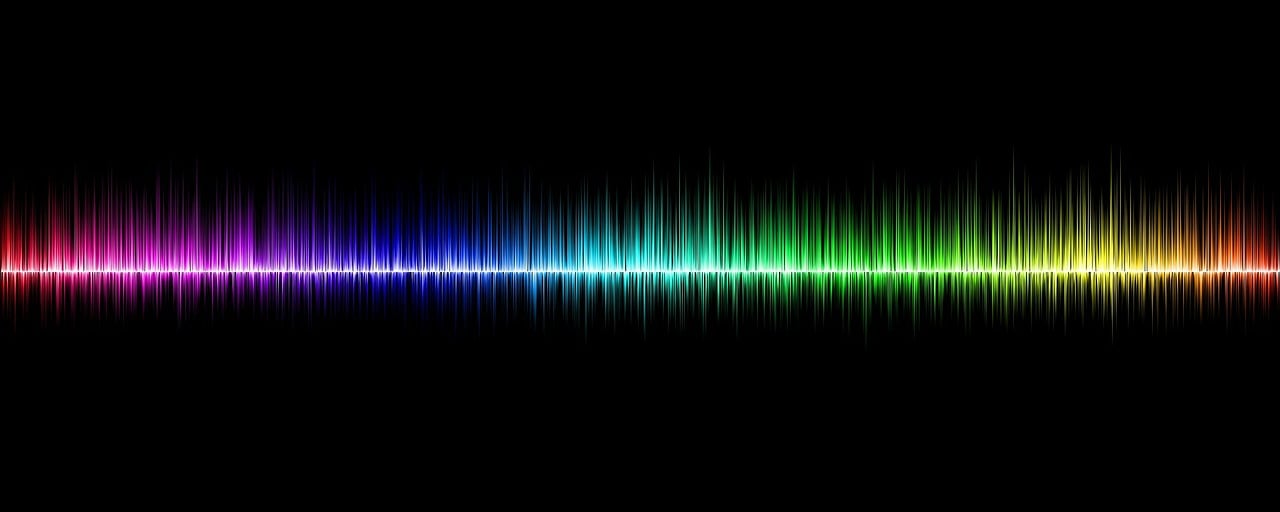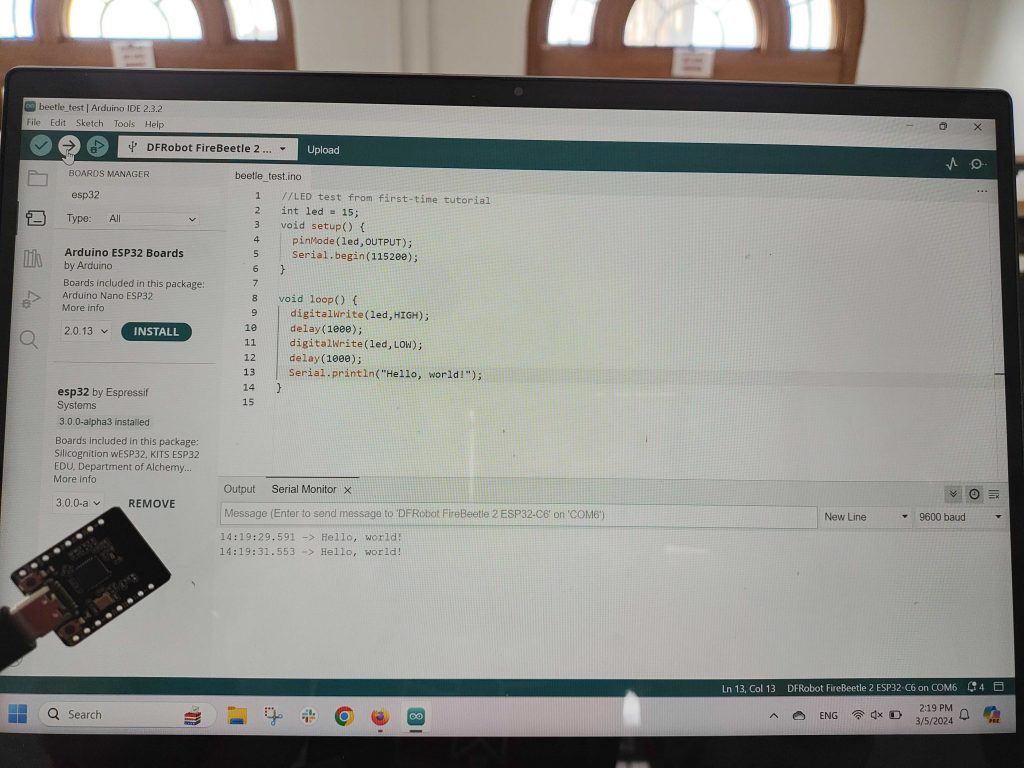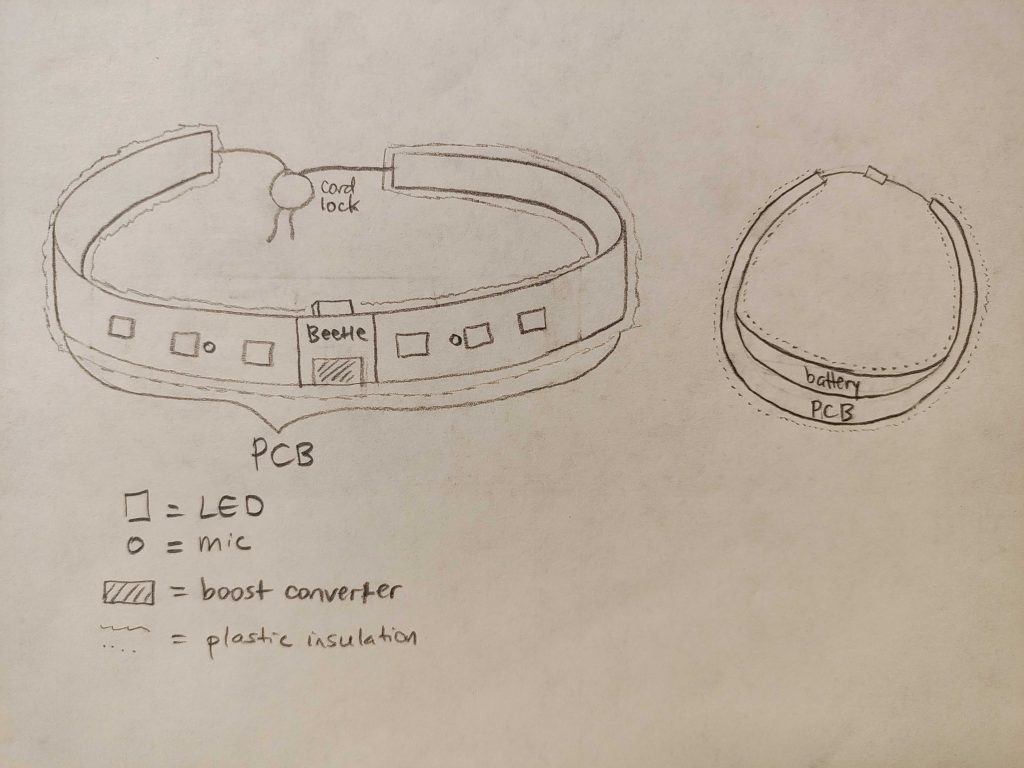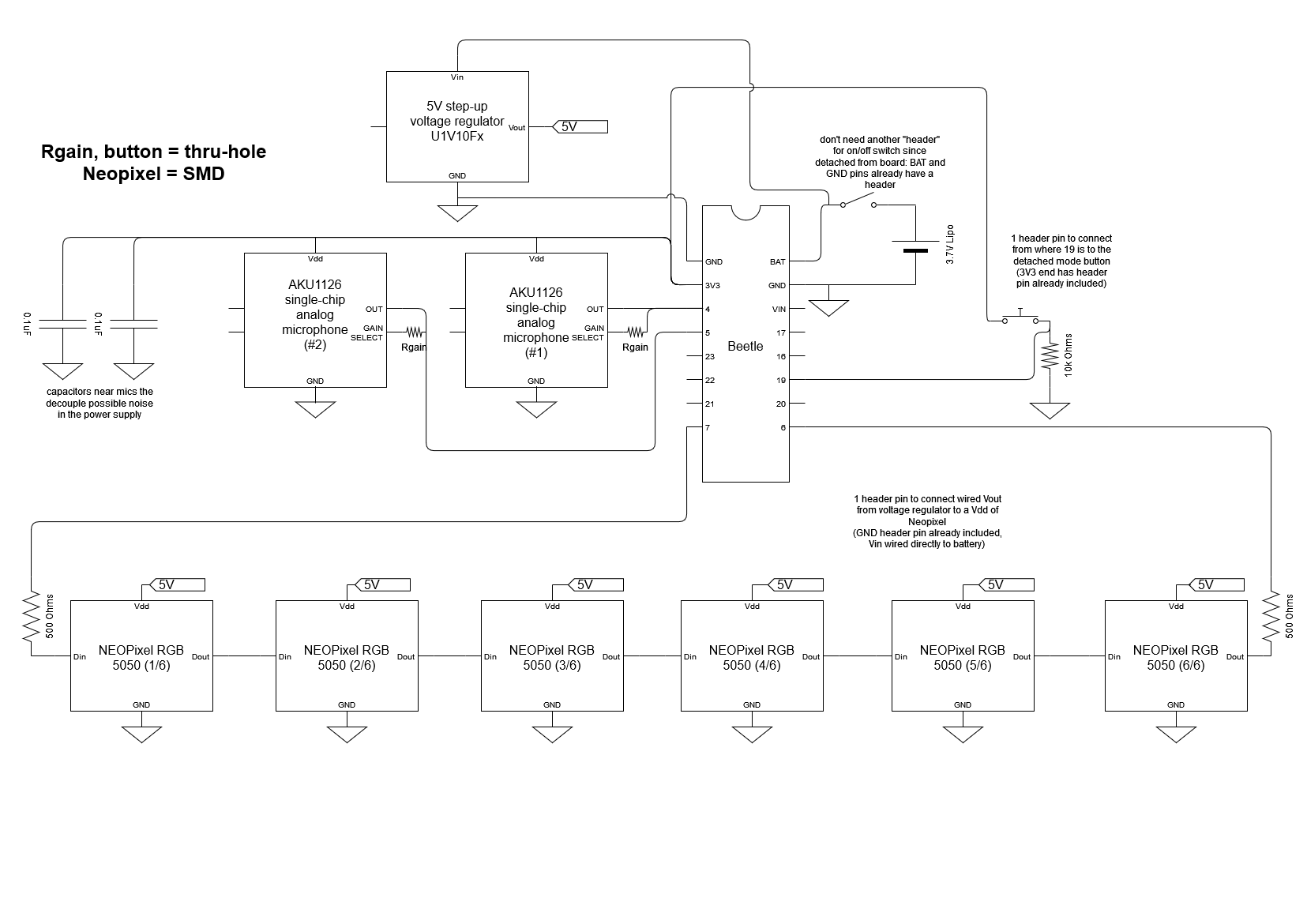Last week’s focus was completing the design report. It has been uploaded to this site.
This week’s focus was creating the PCB design and ordering the PCB. The circuit diagram needed to be converted into a schematic for neatness. The circuit block diagram has changed during the PCB design process. The LED array now has start/end resistors, as indicated on page 10 of the SKC6812RV datasheet included in the Neopixel listing on Adafruit; capacitors are included, to decrease noise from power; and the mode control button now uses a pulldown resistor.
More parts have arrived; currently, the only missing parts are the plastic wrap, cord locks, and PCB. The PCB should arrive sometime this week, after which the electronic components can be attached and electronic prototyping can start.
One risk is schedule changes making it difficult to complete one working subsystem before the interim demo on April 1st. Certain tasks require previous tasks to be completed (for example, connecting Bluetooth to the web app requires establishing a secure Bluetooth connection on the Beetle), and we updated our Gantt chart to acknowledge that some future tasks (ex. Bluetooth-webapp connection) need to be pushed forward a week so that we can finish the tasks that they depend on (ex. Bluetooth connection setup in electronic prototyping). However, since we still have buffer time at the end of the chart, this is not as much of a concern as it could be. Our goal for the interim demo is that by working on the web app and bracelet in parallel, we’ll have at least one of those major subsystems done in time, even if they don’t talk to each other.
Survey feedback indicated that users would want a small, thin bracelet with a shorter (4-6 hour) battery life (as opposed to either a wide & thin or a small & thick bracelet with the original 8-hour battery life).
We have also decided to use exclusively plastic wrap for the exterior of the bracelet, since it comes the closest to meeting the sizing requirements when thicker plastic tubing is not used.
Finally, our schedule has been updated; the Gantt chart can be found here.
A screenshot of our Gantt chart

A) Global Factors [Lucy]:
Globally, hearing loss is one of the most prevalent disorders and is expected to rise by over 60% in the next few decades [1]. Our bracelet will serve as an easy and convenient way for people to check their sound levels. The bracelet is designed to be comfortable, durable, and practical to use for anyone that wants to be more aware of their surrounding noise levels. While our current use case is musicians, the bracelet is not limited to people in the music field. Anyone around the world that has a device that connects to bluetooth will be able to benefit from our product. The web application also is simple and easy to use. Even those who are not technologically savvy will be able to easily navigate through the user friendly interface to observe their sound level readings.
- https://www.ncoa.org/adviser/hearing-aids/hearing-loss-statistics/#rates-by-age
B) Cultural Factors [Katherine]:
In many locations, cultural traditions and practices include musical education and performance. In order to ensure that these musical traditions continue, it is important to take steps to increase participant safety. Our project, which will provide easily-understandable visual feedback for awareness of participants’ sound environments, would allow participants to make more informed choices about their noise exposure levels (for example, practice time duration and frequency). This should allow them to continue safely interacting with music over longer timespans, allowing them to continue the musical traditions of their communities.
Considerations of beliefs and moral values do not apply to this product, because it only provides information to the user and does not suggest what actions they should take as a result. Language considerations apply to our project because the language used in the webapp needs to be both easy for the user to understand and scientifically accurate; in addition, text content should be in a language that users understand.
Laws are relevant to our product, including those regarding wireless transmission (since we are using a premade Bluetooth module, this consideration is taken care of by the creator). Also, even though our project should not and will not save audio data, the presence of microphones means that we should keep in mind laws about privacy. Someone could hack the bracelet and try to use it to illegally record conversations (Pennsylvania is a two-party consent state for recordings, as stated in https://www.dmlp.org/legal-guide/pennsylvania/pennsylvania-recording-law). For that reason, when developing this device, we need to make sure that the microphone data is only ever used to generate decibel values and cannot be used to record or save audio files.
C) Environmental Factors [Freda]
We predict that our device won’t have much effect on the environment. The materials used aren’t renewable or biodegradable, but then again what electronic components are? We decided on plastic casing because of its durable and clear qualities, which not many other materials we know of have (that are also readily available). Thus, we intend for our product to last a long time to help mitigate the pollution cost of materials, as well as advise users to dispose of e-waste properly (not with the regular trash).
In terms of specific living organisms affected, we don’t think the lights would be so bright as to blind others (and the lighting is also adjustable), so animals shouldn’t be harmed, and not sure how plants would be harmed either since they don’t really have eyes. (On the flip side, the lights are probably not bright enough to be used to keep your plants alive, either.) The most danger that animals could run into from this is if the user’s pet(s) decide to eat it, which is something that pet owners should already be aware of (since they have many other items that they don’t want eaten either), so keeping this bracelet safe requires no mitigation out of the usual measures.






